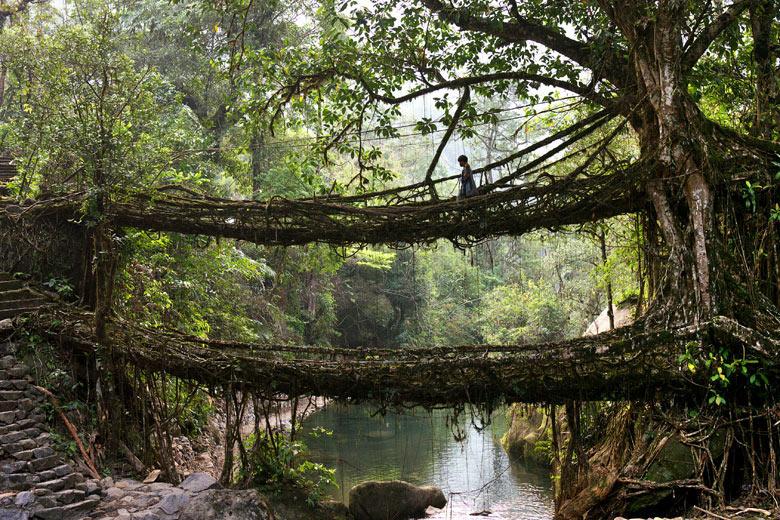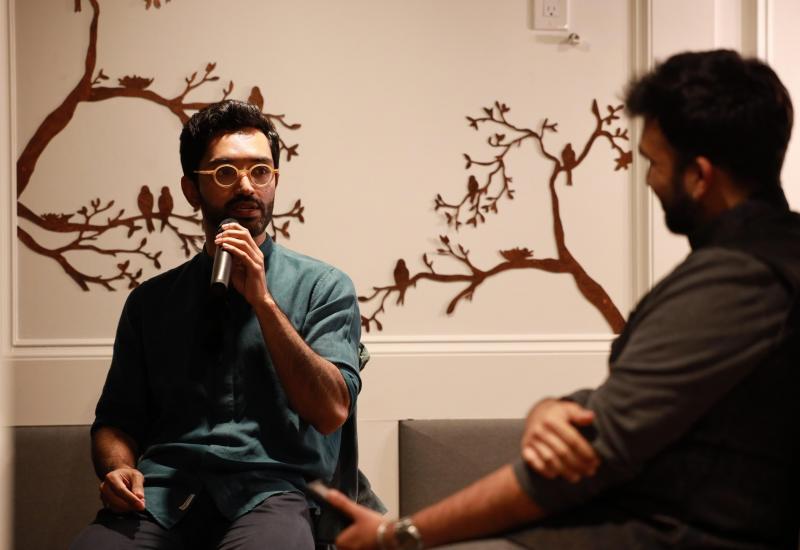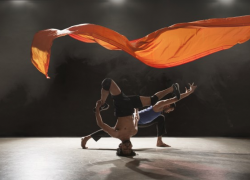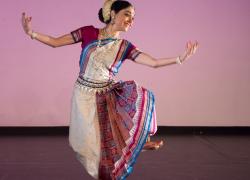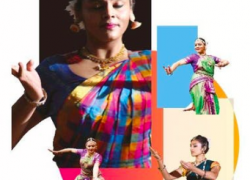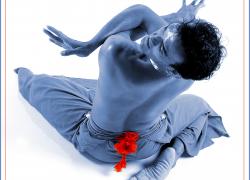The Currency of Caste: Arundhati Roy in Conversation with Ken Hunt
B.R. Ambedkar, principal architect of the Indian Constitution, had in 1936 prepared a presidential address for delivery at the annual conference of a Hindu reformist group, the Jat-Pat Todak Mandal in Lahore. The invitation to speak was withdrawn and the conference cancelled because Ambedkar declined to remove passages on caste and the Hindu scriptures. He published Annihilation of Caste himself that year. The text has recently been republished with an introduction by writer and activist Arundhati Roy. Ken Hunt took the opportunity to talk to her when she was in London.
Arundhati Roy’s The God of Small Things thrust her into the international spotlight in 1997. What followed was a body of work and social activism – in speech and in writing – that many believe has eclipsed her best-selling, award-winning and one and only novel. Since then she has been actively telling other people’s stories in print and prose, telling true-life stories of other kinds and other lives.
Many of her recent writings have been on the interaction of politics and culture. They’ve included Broken Republic: Three Essays (‘Mr Chidambaram’s War’, ‘Walking With The Comrades’ and ‘Trickledown Revolution’, 2011), and Capitalism: A Ghost Story (2014). In my view, the most important of all is ‘The Doctor and the Saint’, her eloquent introduction to the 2014 edition of Dr Bhimrao Ramji Ambedkar’s Annihilation of Caste. In November 2014 she was in London to take part in a discussion about that book and the hellishness of caste at the Purcell Room in London with two human rights activists: the English Pakistani writer, journalist and filmmaker Tariq Ali; and the English Punjabi President of the Federation of Ambedkarite and Buddhist Organisations (UK) (and, disclaimer alert, my wife) Santosh Dass. Weeks before it was advertised, the Southbank event was sold out – an indication of what Arundhati attaching her name to a cause can do.
Language conditions and colours minds and the way people formulate thought. What was Arundhati’s mother tongue? “I speak English and Hindi and Malayalam. Even though I speak and read and write Malayalam as well as Hindi, English is the language that was promoted and therefore the language in which I am most comfortable… There are so many beautiful languages in India. There are so many languages one is a stranger to within India but they keep promoting this Hindi nationalism. It’s easier for somebody in Delhi to understand somebody in Lahore than it is for someone in Delhi to understand someone in Kerala.”
There is a huge promotion of Hindi as India’s non-colonial language, I remark. Is it proving just as globalising as English in some ways? “No!” she exclaims, “because, first of all, it strives to rub out languages like Urdu. But apart from that, you’re looking at a feudal situation. How many places do they speak Hindi? Everywhere else they call it a dialect. It has been the language of feudal lords and so Dalits say, ‘Why should we not speak English? The English were less casteist than the Brahmins.’ That’s why I think eventually you also have to understand that language is not just about the words: it’s what you do with them.”
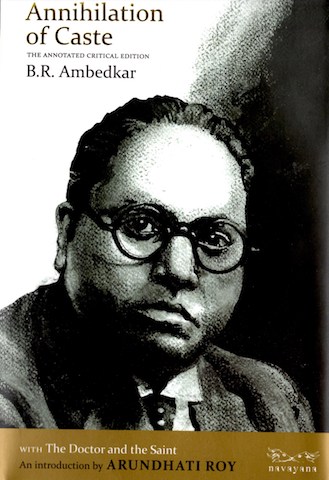
Dalits form the underbelly of the subcontinent’s population and diaspora. They are the ‘Oppressed’, the Untouchables, Gandhi’s Harijans (‘Children of God’). They are generally the ones on the receiving end. For Dalits, rebirth offers no advancement; it’s as if the laws of karma don’t count. Converting to Islam, Buddhism, Christianity or Sikhism seldom quite works to slough past caste-identity skins. As a form of religiously sanctioned and approved mind control, caste is the subcontinent’s most pernicious export, delivered wherever the Indo-Pakistani diaspora goes. Arundhati providing a contextual essay for Annihilation of Caste adds weight and value to arguably the most radical document India ever produced in modern times.
To suggest there are many Indias can hardly come as a surprise. We only ever get to know bits of the subcontinent. Nevertheless, Indians and non-Indians alike bang on about India, beating the drum that hails India as the world’s largest democracy and the cradle of belief systems. Hinduism, Buddhism, Jainism and Sikhism are, naturally, the big ones. By comparison, hardly mentioned at all, are the subcontinent’s still older belief systems of the indigenous Adivasis – adi connotes ‘first’ or original inhabitants – and tribal peoples popularly known as Tribals. Those cultures also energise Arundhati’s writings.
Explaining her own roots amid this splendid diversity, she says: “My mother comes from a community called the Syrian Christians who are the oldest Christians in India and who believe they were converted when St Thomas came. Most of the other Christians in India are people who were converted at the time of the British and most of them were poorer people. A lot converted to try and escape the caste system. They were Dalits. But they never escaped. They still are considered to be Dalit Christians.”
Alternatively known as Saint Thomas Christians or Nasrani – the latter a name for ‘Christian’, supposedly derived from Nazareth – historically they have spoken, as in Arundhati’s mother’s case, Malayalam, Kerala’s primary indigenous language. “The Syrian Christians are a very wealthy community,” she continues, “but very traditional and very suffocating. My mother married ‘outside’ – not just a Hindu but a Bengali. She divorced him and we were completely ostracised by the community. Now both of us independently are embraced by it for various reasons.” “By the church?” I deadpan. “No,” she laughs. “Not by the church.”
She re-composes herself. “My father’s not alive but what is odd is that my mother’s not a practising Christian. She runs an incredible school in Kerala where they do a lot of other subjects – like the kathakali dance form. It’s not at all Christian. She’s not at all Christian. Whereas my father, who was a Hindu, became a Christian. He was an alcoholic who became whatever anybody wanted him to become.”
Her influences, therefore? “The greatest influence in my life as a child was the river that I grew up on, the Meenachil. That’s where The God of Small Things is set. There was no great Christian influence. Or Hindu. I spent all my time on the river. I think fish had a lot to do with my upbringing. You’ve read Walking With The Comrades. You can see that for me to be in the forest, to have been able to be in the forest, to be there not as a tourist, not in some wildlife park but to be really at the heart of what I see as a battle for the future of civilisation, to be under the stars and crossing rivers and all of that, was everything that I wanted there at that time. And I think that’s because that river always is inside you.
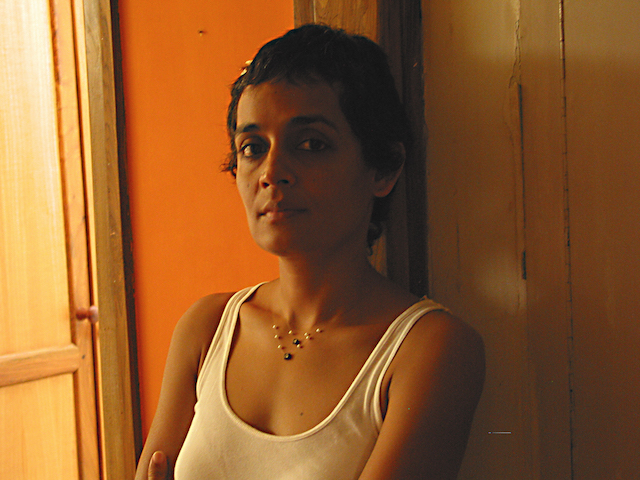
“I’m not an environmentalist or a person who goes and documents. I’m not that. I’m just somebody who’s comfortable there without necessarily wanting to know the Latin name of everything or what it is. It just feels right. I was very comfortable spending three weeks walking through the forest and living under the stars and carrying whatever I needed to on my back.”
Arundhati Roy has chosen an extremely rocky and danger-strewn road to travel. However lion-hearted she appears, like louring clouds, at times a great heaviness descends over parts of this conversation. India is now a place of unscrupulous land grabs and greed-driven updates on Klondike strikes where bauxite, uranium and so on replace precious metals (if that doesn’t sound stupid for a nation in thrall to gold). The publicity from Roy’s garnered column inches both hardens hearts and inspires. At home she is a thorn bush in the side of the Indian government and transglobals and mega-corporations, though the thorns don’t prick mega-corporation consciences. The reaction has been savage. There have been repeated threats against her life, attacks on her property and continued railings about her abuses of India’s freedom of expression.
“During the Mumbai attacks [the 26/11 attacks of 2008],” she recalls, “this particular very right-wing TV channel was interviewing a senior policeman and he was holding forth about how the police were saving the nation and all that. Suddenly he said, ‘You just call Arundhati Roy at the studio and then she’ll start to criticise the police.’ This is on the news, right? ‘No, sir, we would never do that.’ Then he comes to the camera and he says, ‘Arundhati Roy, I hope you’re watching this. We think you’re disgusting.’”
She takes a breath. “That’s the atmosphere – there’s fascism there today where you have a situation where 2,000 Muslims were lynched and burned alive on the streets of Ahmedabad [in Gujarat], one of the most modern cities in India [in 2002]. Then the killers were captured on camera boasting about how they had killed, caught [former Muslim parliamentarian] Ehsan Jafri and hacked off his arms and then burned him. One guy called Babu Bajrangi boasted [on camera, posted on YouTube] about how many Muslims he had killed and how many more he wants to kill. People were telling me, ‘You have free speech in India. You can say what you like.’ I said, ‘That’s right. You can say that you came and murdered so many people and burned so many alive and it’s acceptable.’ So, free speech has a whole new meaning. It’s terrifying.”
A return to her birthplace is required. “I was not very long in Shillong,” she starts. “My parents were divorced when I was one. We came to live in Kerala. I grew up in Kerala. I didn’t ever see my father until I was about 23. I went to Shillong for the ‘first time’ just a couple of years ago.” Meghalaya looks fascinating, I continue, a realm of clouds – Meghalaya literally means ‘abode of clouds’ – with the reputation of being the wettest place in India. “It is!” she agrees. I mention living bridges made out of vines. These are the so-called living bridges of Cherrapunji made out of the roots and vines of a long-lived Ficus species. Generations of the Khasi people have built, tended and extended them. Built higher than a river’s highest monsoon spate water, a few are double-deckers, some reportedly 500 years old.
In our few meetings down the years, nothing has turbo-enthused Arundhati like mentioning living bridges. “Strange that you mention that! That, I think, is the most beautiful thing I’ve ever seen. They are so beautiful. I just thought, ‘I could just make a little hut here.’ So beautiful, that culture.” She sounds wistful but snaps back. “Now they’ve found uranium in those hills, so I don’t know what will happen…”
Wrapping, I ask whether pantheism – the belief in Nature and its divinity – figured in her life at all. “I think, if I believe in anything, it’s that. It’s a bit like animism. I think that’s what The God of Small Things is about. It’s about how everything has its place there. It connects the dent that a baby spider makes on the surface of the water to the violent histories of the past. And how it’s all part of something. If you read God of Small Things, [caste] is the central thing in it. Caste is the engine that drives everything in India today. However hard they try to pretend it’s modernised or things have changed, everything is about caste, including corporatisation. Look at the caste of the people. The judiciary… There isn’t a single Dalit journalist in mainstream media. Every thing is about caste in India today.”
Je suis Bhimrao. Je ne pourrais être Arundhati. (I am…I couldn’t be…)
This article was first published in Pulse 128 (Summer, 2015)

